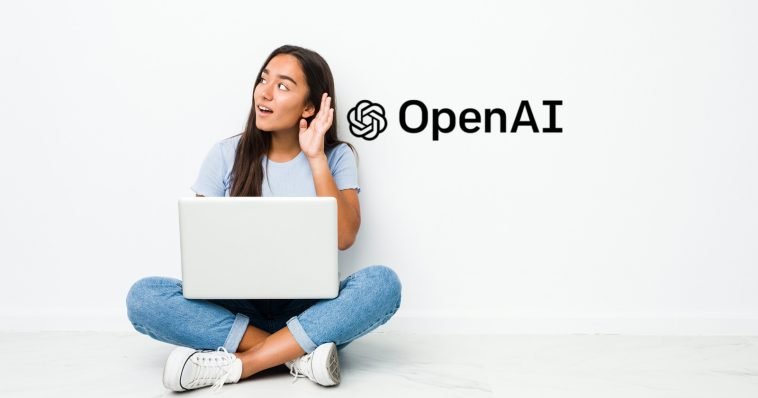Introduction.
I have been exploring new ways to find information online and discovered that ChatGPT offers a refreshing change from traditional search engines like Google.
ChatGPT lets me have a natural conversation that feels more like talking to a friend than typing keywords into a search box.
In this post, I’ll share why I think switching to ChatGPT is a smart move and guide you through five easy steps to make the transition.
Why This Topic Matters
For years, I relied on Google for quick answers, research, and everything in between. Yet, I started noticing that even though Google is incredibly powerful (in fact, it still holds over 90% of the search engine market share according to Statista), it sometimes gives me too many choices or outdated results when I need a clear, concise answer. ChatGPT, on the other hand, offers a more conversational approach.
This means I can ask questions in a natural language and get responses that feel thoughtful and tailored to my needs.
This topic is important because it shows how technology is evolving. ChatGPT uses artificial intelligence to understand and process language, which helps me get more focused answers without having to sift through endless search results.
I find that it’s especially useful when I’m brainstorming, writing, or just curious about a topic. If you value clarity and a human touch in your online searches, this guide might be for you.
The 5 Easy Steps to Replace Google with ChatGPT
Step 1: Understand ChatGPT’s Strengths and Limits
Before you dive in, it’s essential to know what ChatGPT does best—and where it might fall short. ChatGPT excels at providing summaries, creative ideas, and explanations in simple terms.
However, it may not have the most up-to-date statistics or real-time data that a search engine like Google can fetch.
For instance, while Google can pull in the latest news or market trends, ChatGPT is best used for generating ideas, learning concepts, or even drafting content.
I learned that being aware of these differences helps me choose the right tool for the right task. For topics that need live updates, I might still check Google or a dedicated news site.
But for thoughtful discussions or getting a quick overview of a subject, ChatGPT is a fantastic option.
Step 2: Set Up ChatGPT for Easy Access
The next step is to integrate ChatGPT into your daily online routine. Here are a few ways I made it a regular part of my workflow:
- Bookmark ChatGPT: Instead of navigating to Google every time, I saved the ChatGPT page as a bookmark in my browser. This makes it one click away.
- Use Browser Extensions: Some browser extensions can replace your default search engine with ChatGPT. Check out trusted extensions on the Chrome Web Store or Firefox Add-ons site that have good reviews and are regularly updated.
- Desktop Shortcuts: Create a desktop shortcut for ChatGPT. This helps me quickly start a conversation without opening multiple tabs.
Taking these steps ensures that ChatGPT is always at my fingertips when I need a quick answer or a fresh idea.
Step 3: Learn to Ask Better Questions
One thing I discovered is that the way you ask questions can make a big difference in the quality of the answer. Unlike traditional search engines that rely on keywords, ChatGPT responds best to natural language. Here are a few tips I use:
- Be Direct: Ask clear and simple questions. Instead of typing “weather New York,” I might ask, “What is the current weather in New York City?”
- Provide Context: When needed, add a bit of background to your question. For example, “I’m writing a paper on renewable energy. Can you explain how solar panels work?” This helps ChatGPT give more detailed answers.
- Follow-Up: I don’t hesitate to ask follow-up questions if I need more clarity. ChatGPT remembers the context of our conversation, making it easy to dive deeper into a topic.
These tips not only help me get the most out of ChatGPT but also make my interactions more engaging and productive.
Step 4: Explore Integrations and Advanced Features
ChatGPT isn’t just a standalone tool—it can work with other apps and platforms to make your experience even smoother. For instance:
- API Integrations: If you have some technical know-how, you can use ChatGPT’s API to integrate it with your favourite productivity tools. This means I can use it for tasks like summarizing emails or drafting responses right from my workflow.
- Chatbots and Virtual Assistants: Some platforms have started to integrate ChatGPT into their systems. This makes it easier to use conversational AI across different services without needing to switch back and forth between apps.
- Customization Options: I can tweak the way ChatGPT responds by providing more specific instructions. This allows me to tailor its tone and detail to suit my needs better.
Experimenting with these integrations has helped me see ChatGPT as not just a replacement for Google search, but as a versatile tool that enhances my overall digital experience.
Step 5: Adjust Your Routine and Keep Experimenting
Switching tools can take a little time to get used to. I found that gradually incorporating ChatGPT into my daily routine helped me adjust. Here’s how I did it:
- Start Small: I began by using ChatGPT for simple questions or creative brainstorming. Over time, I increased the range of tasks I asked it to handle.
- Mix and Match: I still use Google for some tasks—like checking the latest news or doing in-depth research—but I rely on ChatGPT for quick summaries and personalized advice.
- Feedback and Learning: I pay attention to how well ChatGPT meets my needs. If I find that I need more detail or a different perspective, I adjust my questions or combine it with other sources.
The key is to keep experimenting. As I continue to explore and learn, I become more comfortable with this new way of finding information.
FAQs
Can ChatGPT completely replace Google?
ChatGPT offers a friendly and conversational way to get information, but it might not always provide the most current data. For live news, trends, or specific data points, I still check Google or other trusted sources.
How do I know if the answer from ChatGPT is accurate?
ChatGPT is trained on a vast amount of data, but I always recommend cross-checking important details with trusted websites or sources like Statista for the latest statistics.
Are there any privacy concerns with using ChatGPT?
Privacy is important to me. I make sure to review the privacy policies on the OpenAI website before diving into deeper conversations. I also avoid sharing sensitive personal details.
Is it hard to learn how to use ChatGPT?
Not at all. Once I started interacting with it, I found that asking questions in plain language worked best. The more I use it, the more natural it becomes.
Where can I find more tips on getting the best out of ChatGPT?
Many online communities and resources offer great advice. I often visit forums like the OpenAI Community or read blog posts from tech enthusiasts to learn new tricks.
Further Resources
If you’re curious to learn more about ChatGPT and its potential, here are some links that have helped me:
- OpenAI Blog: Learn about updates and new features from the source. OpenAI Blog
- ChatGPT FAQ: A great resource to answer many common questions about the tool. ChatGPT FAQ
- Tech Forums: Join communities on Reddit or tech-focused sites to see real-life examples and get tips from other users.
- Statista: For the latest search engine statistics and market trends. Statista Search Engine Data
I also encourage you to explore tutorials on YouTube that show practical demonstrations of setting up browser extensions or using ChatGPT in daily tasks. These hands-on guides have been incredibly useful for me.
Conclusion
Switching from Google to ChatGPT has been a refreshing change in how I interact with online information.
I appreciate the conversational style and the ability to get clear, concise answers without navigating endless lists of links.
While Google remains a powerhouse for certain types of information, I see ChatGPT as a versatile tool that complements my digital life, especially when I need a quick summary or a creative spark.
Every day, I discover something new about how AI can simplify complex tasks and help me get things done faster.
If you are curious about exploring new ways to search for and interact with information, I encourage you to give ChatGPT a try using these five easy steps. It might just change the way you think about online searches.
So, how do you feel about replacing Google with ChatGPT using these five easy steps?





GIPHY App Key not set. Please check settings